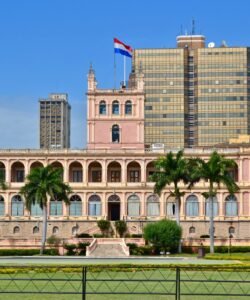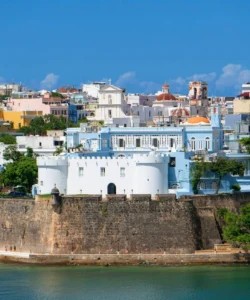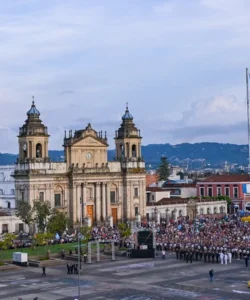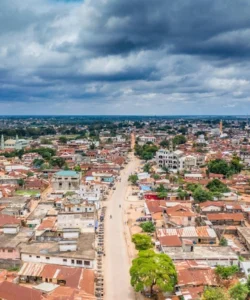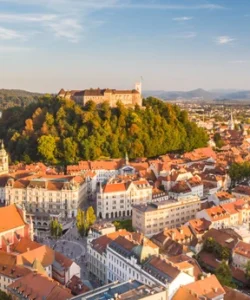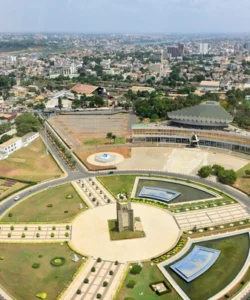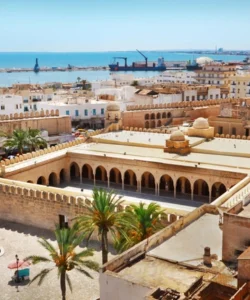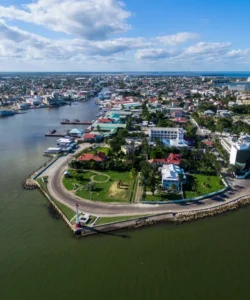Ninh Binh Province, located in the Red River Delta region of northern Vietnam, is a breathtaking destination often referred to as “Halong Bay on Land” due to its spectacular landscape of towering limestone karsts rising dramatically from serene rice paddies and winding rivers. This area, particularly within the Trang An Scenic Landscape Complex, offers a unique blend of natural beauty, ancient history, and cultural tranquility, making it a UNESCO World Heritage site and a must-visit for travelers seeking a different side of Vietnam.
![]()
Name: Ninh Binh (Ninh Bình) Province. The main tourist areas within the province are Trang An, Tam Coc, and Hoa Lu.
Address: Ninh Binh Province, Vietnam. The provincial capital is Ninh Binh City. Key tourist areas are typically reached from Ninh Binh City or directly from Hanoi.
How to get there:
Ninh Binh is easily accessible from Hanoi and other major cities in Vietnam:
- From Hanoi (Most Common):
- Train: Trains depart regularly from Hanoi Railway Station to Ninh Binh Railway Station. The journey takes approximately 2-2.5 hours. This is a comfortable and scenic option.
- Bus/Limousine Van: Numerous bus companies and limousine van services offer direct routes from Hanoi to Ninh Binh City or directly to Tam Coc/Trang An. The journey usually takes around 1.5-2 hours via the expressway. This is a popular and convenient option.
- Private Car/Taxi: Hiring a private car provides flexibility and takes a similar amount of time.
- Organized Tour: Many tour operators in Hanoi offer day trips or multi-day tours to Ninh Binh, often combining Trang An/Tam Coc with Hoa Lu.
- From Other Cities: Buses and trains connect Ninh Binh to other major cities in Vietnam, such as Hue, Da Nang, and Ho Chi Minh City, though journeys are much longer.
- Within Ninh Binh: Once in Ninh Binh City, or at your accommodation in Tam Coc/Trang An, you can explore by bicycle, motorbike, or local taxi/Grab. Most boat tours start directly from the specific boat stations.
Landscape and Architecture:
Ninh Binh’s landscape is a mesmerizing tapestry of natural wonders and ancient human interventions:
- Karst Limestone Mountains: The defining feature. Thousands of dramatic limestone karsts (similar to those in Halong Bay but on land) rise abruptly from the flat plains, creating a spectacular and often ethereal landscape, especially when shrouded in mist.
- Rice Paddies and Rivers: Lush green or golden yellow rice paddies (depending on the season) stretch between the karsts, crisscrossed by meandering rivers and waterways. These waterways are essential for the famous boat tours.
- Caves and Grottoes: Many of the karsts hide impressive limestone caves and grottoes, some of which are explored during the boat tours. These range from small, accessible caves to vast, multi-chambered caverns.
- Boat Tours (Trang An & Tam Coc): The most iconic way to experience the landscape.
- Trang An Scenic Landscape Complex: Offers multiple boat routes, gliding through a serene network of rivers, tunnels, and caves, passing by temples and amidst the stunning karsts. It’s often considered the more pristine and culturally rich option.
- Tam Coc-Bich Dong (Three Caves – Green Grotto): Also involves rowing boats through caves and rice paddies, famous for the sight of local rowers propelling their boats with their feet.
- Ancient Capital Remains (Hoa Lu):
- Hoa Lu Ancient Capital: The site of Vietnam’s capital in the 10th and 11th centuries (under the Dinh and Early Le Dynasties). While most of the original imperial structures are gone, two well-preserved temples (King Dinh Temple and King Le Temple) remain, showcasing traditional Vietnamese temple architecture amidst a picturesque setting.
- Bich Dong Pagoda: A beautiful ancient pagoda complex built into a limestone mountain, comprising three separate pagodas (Ha, Trung, Thuong) at different levels, often reached by climbing steps.
- Mua Cave (Hang Mua) & Ngoa Long Mountain: While “cave” in name, the main draw here is the approximately 500 steps leading to a dragon-crested peak, offering one of the most iconic panoramic viewpoints over the limestone karsts and rice paddies of Tam Coc.
- Bai Dinh Pagoda: A massive, modern (though traditionally styled) Buddhist complex, one of the largest in Southeast Asia, featuring enormous statues, bell towers, and a vast array of arhat statues, offering a glimpse into contemporary Vietnamese Buddhism on a grand scale.
- Van Long Wetland Nature Reserve: A tranquil protected area for birdwatching and gentle boat rides through untouched wetlands.
What makes it famous:
Ninh Binh is famous for:
- “Halong Bay on Land”: Its dramatic landscape of limestone karsts, rice paddies, and waterways is uniquely beautiful and visually comparable to Halong Bay, but with an accessible land-based experience.
- UNESCO World Heritage Site (Trang An Scenic Landscape Complex): Recognized for its outstanding natural beauty, geological value, archaeological sites (showing human adaptation over millennia), and cultural significance.
- Boat Tours: The serene and immersive boat tours through caves and karsts are a signature experience, often with local rowers who use their feet to propel the boats.
- Ancient Capital of Hoa Lu: Its historical significance as Vietnam’s former capital offers a deep dive into the nation’s early independent history.
- Panoramic Views from Mua Cave: The iconic climb to the peak above Mua Cave provides arguably the most stunning aerial views of the entire landscape.
- Birdwatching and Wildlife: The wetlands and national parks within the province offer opportunities for observing diverse birdlife and other unique species.
- Tranquil and Authentic Rural Life: It offers a peaceful retreat into rural Vietnamese life, with friendly locals and a slower pace compared to the bustling cities.
Differences from some other wonders:
Ninh Binh distinguishes itself from other famous natural and historical sites in several key ways:
- Drowned Karst vs. Terrestrial Karst: While Ha Long Bay is a “drowned karst” landscape (limestone karsts rising from the sea), Ninh Binh is a terrestrial karst landscape, where the karsts rise from rice paddies and rivers. This fundamental difference in setting creates a distinct visual and experiential contrast.
- Human-Powered Boat Tours: The prevalence of human-powered rowing boats (often propelled by feet) through the waterways and caves, rather than larger motorboats as in Halong Bay, offers a more intimate, quiet, and environmentally friendly way to explore the landscape.
- Intertwined Nature and Ancient History: Unlike purely natural parks, Ninh Binh’s landscape is profoundly intertwined with over 1,000 years of Vietnamese imperial history (Hoa Lu) and archaeological evidence of continuous human habitation, making it a “cultural landscape” in a very deep sense. This integration of nature and ancient human civilization is a unique aspect.
- Accessibility for Exploration: The compact nature of the main tourist zones (Trang An, Tam Coc) allows for easy exploration by cycling or motorbike between sites, offering a sense of independent discovery that might be harder in sprawling, less connected sites.
- Active Agriculture in Scenic Areas: The active cultivation of rice paddies directly within the stunning karst landscape means visitors see a living, working environment that also functions as a major scenic attraction, creating a harmonious blend of livelihood and natural beauty.
In essence, Ninh Binh is a multifaceted wonder, offering a serene yet spectacular journey through a unique geological landscape, ancient imperial history, and a vibrant, enduring rural culture, making it an unforgettable highlight of northern Vietnam.


